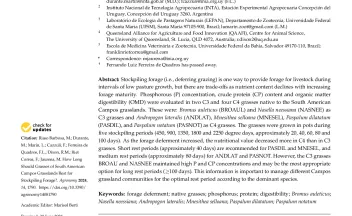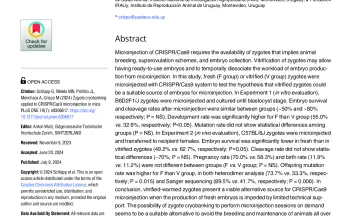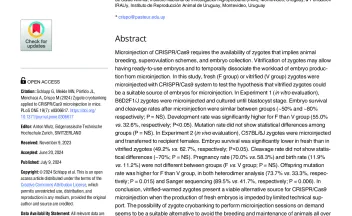How long should grasses of South American campos grasslands rest for stockpiling forage?

ABSTRACT.- Stockpiling forage (i.e., deferring grazing) is one way to provide forage for livestock during intervals of low pasture growth, but there are trade-offs as nutrient content declines with increasing forage maturity. Phosphorous (P) concentration, crude protein (CP) content and organic matter digestibility (OMD) were evaluated in two C3 and four C4 grasses native to the South American Campos grasslands.



